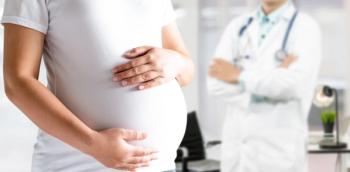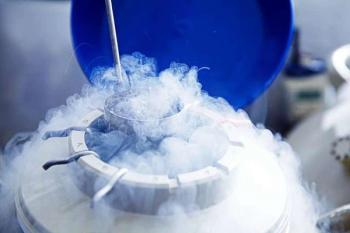Key takeaways:
- Researchers identified 4 distinct PCOS subtypes: hyperandrogenic (HA-PCOS), overweight-obesity, high SHBG, and elevated LH and AMH.
- Each subtype showed unique hormonal and metabolic characteristics influencing fertility and treatment response.
- Women with HA-PCOS had improved outcomes with frozen embryo transfer compared to fresh transfers.
- The findings were validated across five international cohorts, confirming consistent PCOS subgroup patterns.
- Results highlight opportunities for more personalized PCOS diagnosis, management, and IVF treatment strategies.
Researchers have identified 4 subgroups of polycystic ovary syndrome (PCOS), including hyperandrogenic phenotype (HA-PCOS), overweight-obesity phenotype (OB-PCOS), high level of sex hormone-binding globulin (SHBG-PCOS), and elevated luteinizing hormone and antimüllerian hormone (LH-PCOS).1
These results, published in Nature Medicine, highlight differences in pregnancy rates, live births, and complications based on PCOS subtype. According to investigators, this indicates an opportunity for clinicians to utilize specific in vitro fertilization (IVF) strategies based on a patient’s PCOS subgroup.1
“For example, women with HA-PCOS responded better to the transfer of frozen embryos compared to the transfer of fresh embryos – a finding that may influence future treatment practices,” said Elisabet Stener-Victorin, PhD, professor at Karolinska Institutet.1
Identifying clinical features and variables
The study was conducted to determine variables capable of differentiating clinical PCOS subtypes.2 Participants included cisgender women aged 20 to 45 years diagnosed with PCOS using broader Rotterdam diagnostic criteria.
These criteria required the presence of 2 clinical features, including included menstrual cycle length under 21 days, hyperandrogenism, and 12 or more follicles measuring 2 to 9 mm in each ovary or ovarian volume over 10 ml. Patients receiving therapies for PCOS at enrollment were excluded from the analysis.2
Twenty-nine clinical features were examined at baseline for identifying PCOS subgroups. The overall value of each feature was assessed through Spearman correlation. Features with a value under 10% were excluded.2
There were 9 continuous variables included in the final analysis. These included body mass index (BMI), luteinizing hormone (LH), follicle-stimulating hormone (FSH), testosterone, sex hormone-binding globulin (SHBG), dehydroepiandrosterone sulfate (DHEA-S), antimüllerian hormone (AMH), fasting insulin, and fasting glucose.2
Sample collection and laboratory analysis
Investigators collected blood samples at the first consultations. On days 1 to 3 of menstruation, measurements of reproductive steroid hormone levels were also performed. An enzyme-linked immunosorbent assay was used to measure AMH levels and biochemical parameters.2
Participants were diagnosed between 2014 and 2018, then underwent follow-up over telephone between March 2021 and August 2024. A median follow-up duration of 6.5 years was reported, during which patients reported current height, weight, and menstrual cycle status.2
Additional follow-up assessments included pregnancies and births during follow-up, IVF during follow-up, and disease status. Participants also underwent physical examination. Among the study population, the following PCOS subtypes were reported:2
- HA-PCOS in 25%
- OB-PCOS in 26%
- SHBG-PCOS in 26%
- LH-PCOS in 23%
Characteristics of PCOS subtypes
The first of these subtypes was characterized by significant DHEA-S and mild metabolic disorders, while the second was characterized by increased BMI, fasting glucose, and fasting insulin level. The third was characterized by the greatest SHBG level and lowest BMI, while the fourth was characterized by increased LH, FSH, and AMH levels.2
Investigators also performed 5 independent validation cohorts including women from China, the United States, Europe, Singapore, and Brazil. The same 4 subtypes were identified in each of these cohorts. Area under the curves for the accuracy of prediction in each cohort were 0.88, 0.92, 0.88, 0.98, and 0.82, respectively.2
In the HA-PCOS subgroup, 67.2% of patients undergoing follow-up still met the Rotterdam criteria for PCOS. In the OB-PCOS, SHBG-PCOS, and LH-PCOS subgroups, these rates were 50.9%, 52.8%, and 74.8%, respectively.2
Implications
These results highlighted the presence of 4 PCOS subtypes with unique characteristics. Investigators concluded these subtypes indicated the potential for more personalized treatment among patients with PCOS.2
“This international collaboration has provided robust evidence that could change how we diagnose, treat, and follow up on women with PCOS. It also emphasizes that treatment can be tailored to the PCOS subtype to better capture the biological variation in PCOS,” said Elisabet Stener-Victorin.1
References
- Four subgroups of PCOS open up for individualized treatment. Karolinska Institutet. October 29, 2025. Accessed November 3, 2025. https://www.eurekalert.org/news-releases/1103614.
- Gao X, Zhao S, Du Y, et al. Data-driven subtypes of polycystic ovary syndrome and their association with clinical outcomes. Nat Med. 2025. doi.org:10.1038/s41591-025-03984-1

















